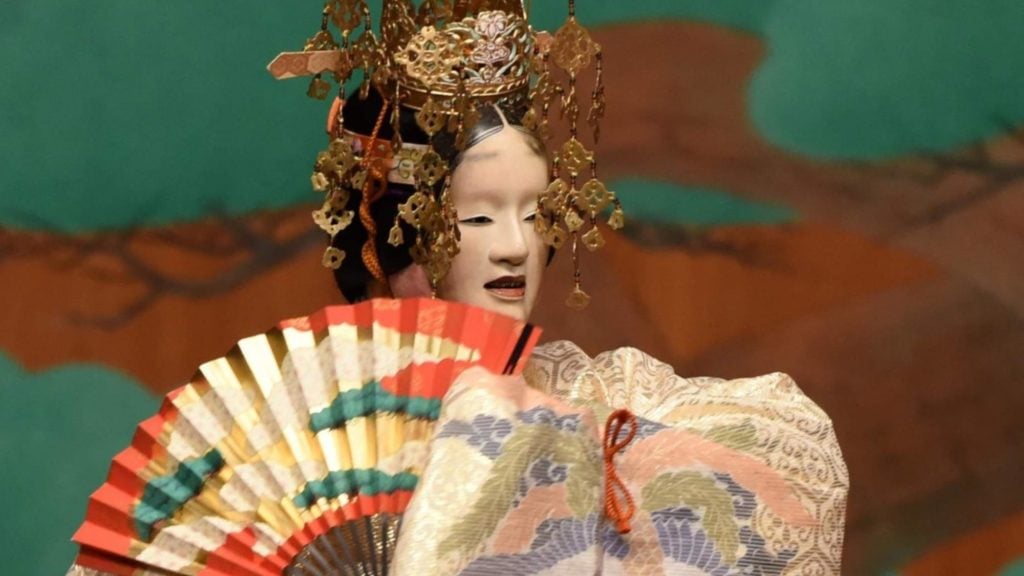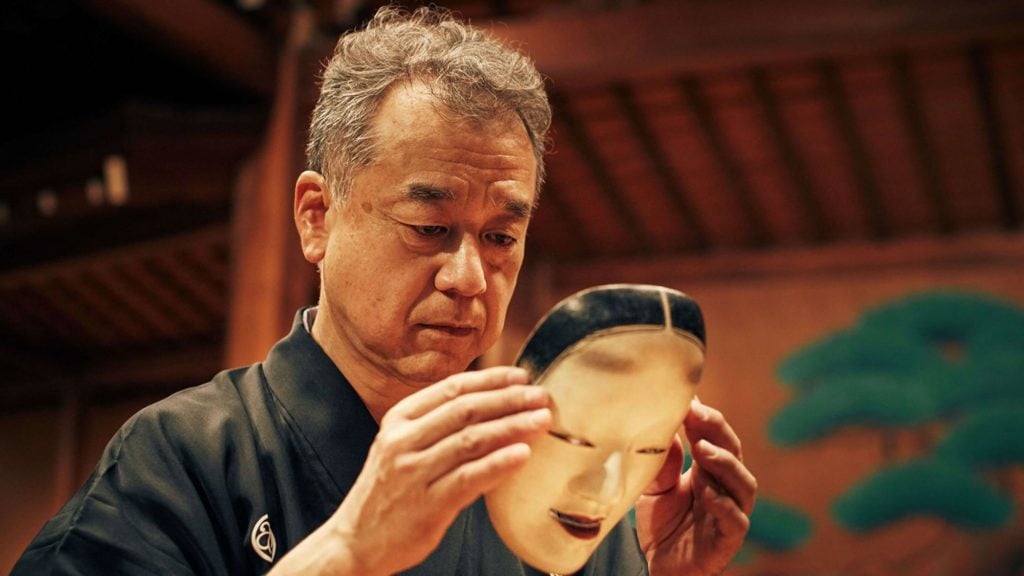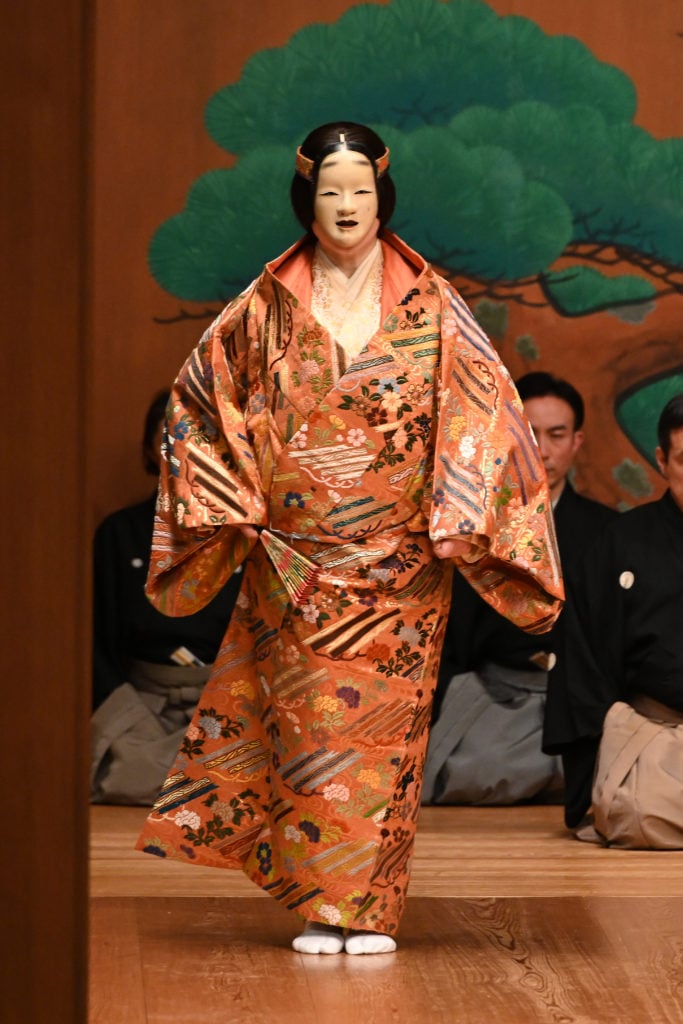Noh, an Art of Contrasts
Feature
Diego Pellecchia, Associate Professor at Kyoto Sangyō University, introduces one of the oldest extant theatrical forms in the world.

Noh is a classical Japanese performing art comprising poetry, chant, music, dance, costumes, and masks. These elements are woven together in a single narrative performed on a simple wooden stage. Minimalistic yet elaborate, primitive yet sophisticated, ancient yet contemporary, it may be this juxtaposition of contrasting elements that renders Noh so appealing to us.
What we know as Noh today is the result of a process of refinement affecting both its repertoire and performance techniques that occurred over more than six centuries. Clad in gorgeous silk and gold brocade costumes, the few actors appearing in a Noh play move according to a highly formalised choreography that combines mimetic and abstract gestures. The peculiar stance with bent knees and sliding steps (suriashi) for which Noh is famous is not a gimmick. The precious masks worn by the main character (shite) are extremely sensitive to light and the angle at which they are presented, thus requiring perfect balance. Practical reasons often lie behind Noh’s aesthetic features: this makes watching Noh even more interesting.

The instrumentalists (hayashi kata) sit in plain sight at the back of the stage, contributing to the narrative through music. The sound of Noh is raw. According to Western standards, the bamboo flute plays “off-key,” creating dissonances that may sound jarring to the untrained ear. The percussionists intersperse precisely executed beats with loud calls – sometimes prolonged howls, sometimes hoarse shouts – through which they express the mood of a scene while highlighting the ma, the space between beats.
Noh is “under-rehearsed” but “over-trained.” Noh performers, each of whom specializes in a single role or instrument, dedicate their lives to mastering a limited repertoire of plays, which are composed of recurring choreographic or musical segments. Each performer trains individually, only to meet with the others for a short, non-dress rehearsal (mōshiawase) a few days before the day of the performance – a one-time event not to be repeated. By doing so, the freshness of the performance shared by actors and audience is preserved. Noh emphasises the ephemerality of the performative act, as something that vanishes the moment it originates. Musakui no sakui, or “intentional unintentionality,” is an expression that well describes how in Noh the spontaneous, or “natural” emergence of emotion is nurtured through great artifice.
‘Noh is “under-rehearsed” but “over-trained.” ’
Created between the fourteenth and the sixteenth centuries, Noh plays recount the stories of deities descending on earth to interact with humans, demons with a human heart lamenting the misery of their existence, or restless spirits seeking to be released from the attachment that binds them to this world. In a Noh play the boundary between history and fiction, past and present, memory and imagination blur.
Informed by Shintō and Buddhist thought, Noh is deeply connected with nature. Each play is typically associated with a season, and references to plants, animals and weather elements abound, a custom that Noh inherited from classical Japanese poetry, on which many of its texts are based. The expression sōmoku kokudō shikkai jōbutsu, found in the Nirvana Sutra, refers to how even inanimate things such as plants or stones have “Buddha-nature,” and can thus reach enlightenment. Avoiding what would be a simplistic division between humans and nature, living and dead, good and evil, the message embedded in many Noh plays is one of compassion, respect, and understanding of all things populating this world.

Diego Pellecchia is an Associate Professor at Kyoto Sangyō University, Faculty of Cultural Studies. After receiving a PhD in Drama and Theatre Studies from Royal Holloway, University of London, he moved to Kyoto, where he researches and practices Noh chant and dance. In 2020 he received his teaching license from the Kongo school of Noh, becoming one of the few non-Japanese Noh instructors in the world.